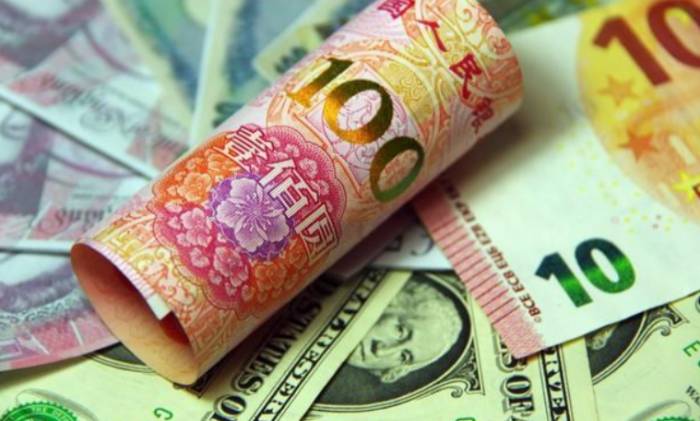3 RMB Exchange Rates Rise; CFETS Up 0.06% Weekly
Beijing, September 2 - The latest calculation by the China Foreign Exchange Trade System (CFETS) on September 2 shows that the CFETS RMB Exchange Rate Index for August 30, 2024, was 97.95, up by 0.06% on a weekly basis; the BIS Currency Basket RMB Exchange Rate Index was reported at 103.67, up by 0.13%; the SDR Currency Basket RMB Exchange Rate Index was at 92.86, up by 0.30%.
The figure shows the three major RMB exchange rate indices as of August 30.
Source: China Foreign Exchange Trade System.
In August, the RMB exchange rate against the US dollar rebounded by nearly 2%, marking the largest single-month appreciation of the RMB exchange rate in 2024.
Specific data shows that the onshore RMB appreciated by 1,380 basis points against the US dollar to 7.0881, and the offshore RMB appreciated by 1,370 points; the RMB's central parity rate against the US dollar was adjusted up by 222 basis points to 7.1124.
According to China International Capital Corporation (CICC), the release of export settlement demand and the recent weaker performance of the overseas US dollar are two important reasons for the significant appreciation of the RMB exchange rate.
Advertisement
On the news front: On August 30, the Ministry of Finance released the "2024 First Half-Year Report on the Implementation of China's Fiscal Policy," which clarified the six key areas of fiscal policy for the next step.
On August 30, the People's Bank of China (PBOC) official website published the 2024 No.
1 announcement on government bond transactions.
In August 2024, the central bank carried out open market government bond transactions, buying short-term government bonds from some primary dealers in the open market operations and selling long-term government bonds, with a net purchase of bond face value of 100 billion yuan for the entire month.
The China Foreign Exchange Trade System plans to launch differential delivery forward transactions in the interbank foreign currency market on September 2.
On the data front: The PBOC released the 2024 Q2 statistical report on the direction of financial institutions' loan investments.
According to the statistics, at the end of the second quarter of 2024, the balance of RMB loans from financial institutions was 250.85 trillion yuan, a year-on-year increase of 8.8%, with an increase of 13.26 trillion yuan in RMB loans in the first half of the year.
Data from the State Administration of Foreign Exchange shows that in July, the scale of China's international balance of payments for goods and services trade was 4,235.2 billion yuan, a year-on-year increase of 12%.
The US second-quarter real GDP annualized revised value increased by 3.0% quarter-on-quarter, expected to rise by 2.8%, with an initial value of 2.8%, and a final value of 1.3% for the first quarter.
The US core PCE price index in July increased by 2.6% year-on-year, expected to rise by 2.7%, with a previous value of 2.6%; it increased by 0.2% month-on-month, expected to rise by 0.2%, with a previous value of 0.2%.
In terms of RMB internationalization: The President of the New Development Bank, Rousseff, stated that the bank will expand local currency financing for member countries to support the sustainable development of emerging economies and developing countries.
International liquidity should be introduced into developing countries, and alternative solutions such as local currency financing should be formulated to expand the fiscal space for investment.
In September, due to the fact that exporters still have a lot of US dollar positions retained in the first half of the year that need to be cleared, the market supply and demand may still be in a direction conducive to the appreciation of the RMB exchange rate.

CICC pointed out that the risk of "stampede" caused by the concentrated entry of exporters' settlement demand cannot be ruled out.
In terms of policy, the People's Bank of China gradually withdrew counter-cyclical factors, offshore RMB liquidity, and other depreciation response tools in August, and currently maintains a neutral policy stance.
If the RMB exchange rate appreciates further away from the central parity rate, the possibility of the People's Bank of China taking action to stabilize market supply and demand cannot be ruled out.
Guan Tao, Chief Economist of BOC Securities, said that due to the deep degree of interest rate inversion between the RMB and the US dollar, this has led to a dull response from enterprises to the previous rebound of the RMB.
Perhaps many enterprises want to wait until the RMB breaks through 7 (equivalent to a 4% appreciation from the annual low point) before reversing operations.
However, once the RMB breaks through 7, enterprises may face a concentrated short-selling stampede.
It is rumored that the recent acceleration of the RMB's rise is due to the impact of institutions' concentrated portfolio adjustments in the offshore market at the end of the month, against the backdrop of the Fed's interest rate cut being almost certain and the rapid decline of the US dollar index.
Leave a Comment